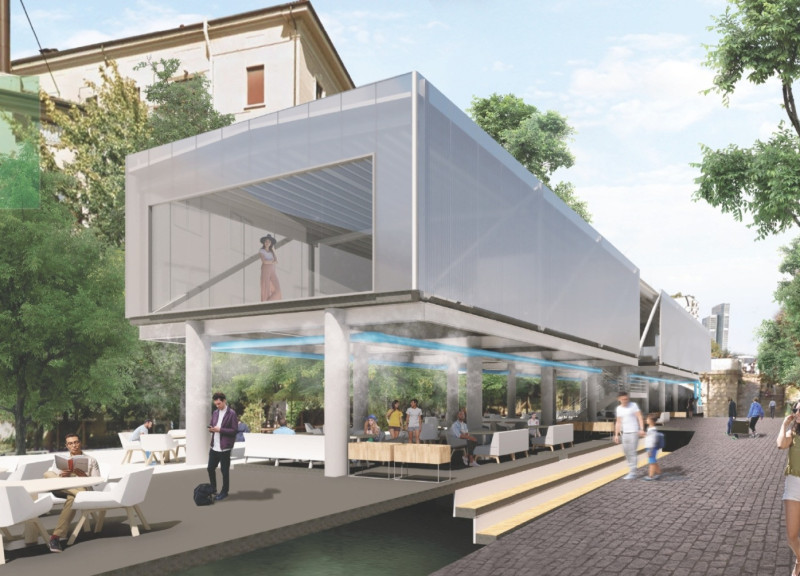5 key facts about this project
"Rinascimento in Blu" is an architectural design initiative focused on reshaping the urban landscape of Milan with a specific emphasis on the integration of water. The project is situated in the historic Navigli canal area, aiming to blend ecological principles with urban functionality. Its overall design concept prioritizes sustainability, resilience, and a strong connection to the community, tackling challenges posed by growing urban density and climate concerns.
Innovative Cooling Devices
The design features engineered cooling devices that take advantage of natural processes, including evaporative cooling and natural ventilation. These devices are strategically placed throughout the civic spaces, helping to improve the local climate and reduce the effects of urban heat. This approach enhances thermal comfort and encourages the use of outdoor areas at all times of the year while also improving air quality for residents and visitors alike.
Distinct Urban Spaces
Different areas are carefully designed to create a unified urban landscape. One key space is Parco Scenico, which serves as a welcoming entrance to the redevelopment area. It opens up green corridors that enhance biodiversity, incorporating native plant species that help local wildlife thrive. The area emphasizes a connection to nature, reinforcing the project's ecological goals.
Multifunctional Transit Area
The Exhibition Underpass acts as a transit space that combines movement and art. This underground area provides a pathway for pedestrians while hosting exhibitions that educate about the importance of water management in urban settings. By connecting these two functions, the design enhances the overall experience of moving through the city, making it both practical and informative.
Cultural and Reflective Spaces
The Arts Museum serves a vital role in fostering a connection between Milan's historical context and its contemporary culture. It features design elements like misting systems that improve outdoor comfort, inviting people to engage more with the space. Alongside this, Ponte delle Gabelle creates a reflective space where visitors can contemplate the significance of the canal, encouraging quiet moments amid the urban environment.
Although specific materials are not included in the presentation, the focus on sustainability suggests a commitment to environmentally friendly construction practices. The design illustrates a thoughtful relationship between architecture and nature, aiming to strengthen the bond between people and their urban surroundings.






















































